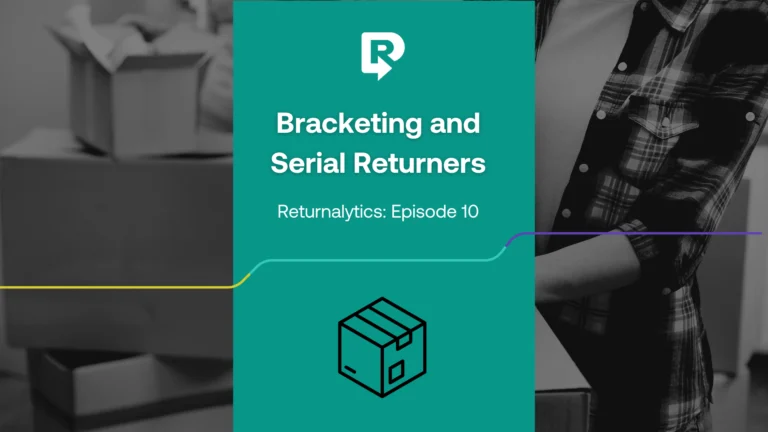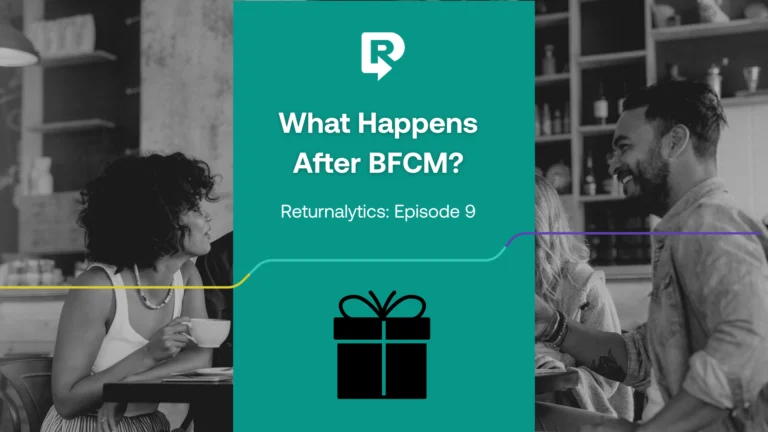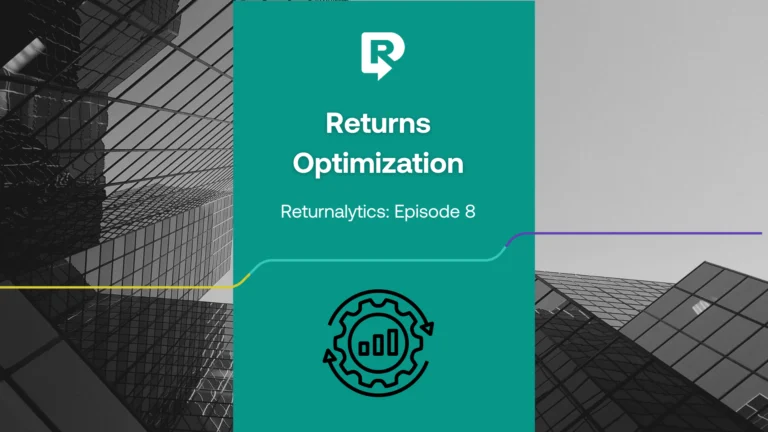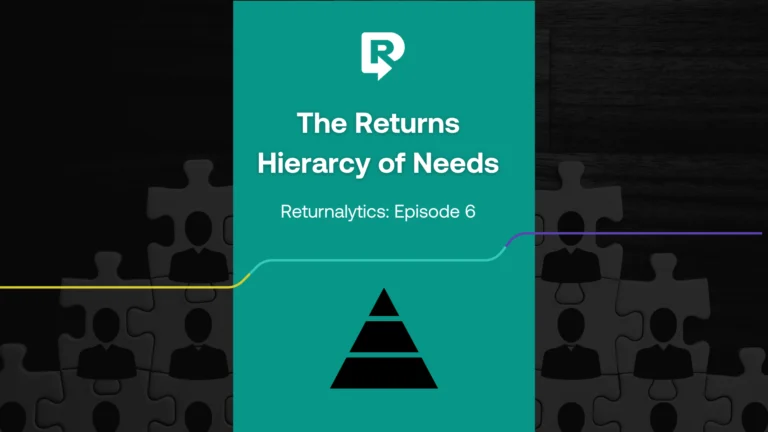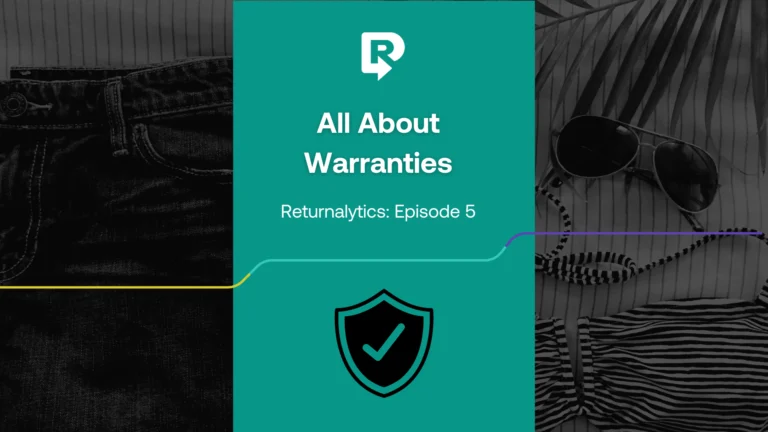David Gonzalez – 8:40
Yeah, that’s a really interesting way to look at it. And I think to drive the point home, we should dive into the impact that this has on merchants bottom line. So, let’s use some averages here and break it down.
Manually processing a warranty claim takes about 15 minutes on average and costs between, you know, $3.50 to $5 bucks per warranty processed. And that’s just the labor costs that’s not taking into account shipping costs, replacement cost, cost due to churn, cost of fraud, lost out future CLV. So, in short, it’s incredibly expensive.
Travis Farey – 9:15
So manually processing warranty request clearly has an impact on the bottom line. But what do merchant stand to gain from having one system to handle warranties, exchanges, refunds, and store credits?
David Gonzalez – 9:28
Yeah. Well, first off automating warranty returns and offering warranties as a return type, has proven to affect customer behavior by dropping refund rates by as much as 30 percent, showing that customers want to keep their purchases if they’re given the choice to get their problems solved. So said another way, the average refund rate is usually around 80 percent if handled manually. Offering warranties as a return type, drops that refund rate from 80 percent to 50 percent.
On top of that, offering warranties on average leads to doubling your average order value, which means higher customer lifetime value since those shoppers aren’t choosing their refunds. And lastly in addition to that, automation and forces legitimate request and decreases fraud, which also protects your bottom line.
So how do we know all this? Where are all these numbers coming from? In the last three or four years or so, we processed what over a million-warranty requests and that number is going up by like 2000 percent every quarter. So, Travis did I miss anything there?
Travis Farey – 10:34
No, I think you said that perfectly. The only other thing I can stress is it’s super important to know what’s going wrong with your products. The number one reason for warranty claims is due to damage or defect. So, looking into your returns data will allow you to improve your products which reduces the amount of warranty claims in general. That means less products coming back and more money in your pocket.
Remember your data is gold. The more you’re able to understand why things are going wrong, the more proactive you can be and the better it is for your business. So, knowing why something is wrong is the first step, but then knowing what you can do about it is the thing that gets your business to the next level.
David Gonzalez – 11:18
So, if you do want to automate warranty returns and have it all in one system, what should you including your warranty return policy for your shoppers?
Travis Farey – 11:26
Yeah, that’s a great question. So, to create a successful warranty return policy, there’s some specific details that you need to include so that your shopper knows what is covered or vice versa, what’s not covered by their warranty program.
Some of these things include whether you’re willing to replace, repair, or give a complete refund for the shopper’s item, and then whether the shopper must pay for shipping or any other costs. The next thing would be the length of time that the warranty covers the product from the date of purchase. So, is it a six-month warranty, a one-year warranty, and so on. And lastly, you need to include what the warranty does not cover. So, damages that may be caused by improper use, if you specifically say that your product can hold up to 50 pounds, and somebody was trying to carry 100 pounds with the product, you know, that can be considered improper use and wouldn’t be covered under the warranty.
David Gonzalez – 12:25
For sure. And in that same vein, shoppers want to go through the workflow that works best for them, so they don’t always want to chat in or email support teams, they may just want a self-serve option. So, automation is incredibly important here and giving shoppers that choice. But what are some good examples of companies who do this well?
Travis Farey – 12:43
Yeah. I think the first one that comes to mind is Groove Life’s No BS, 94-year warranty policy. I think that just phenomenal. And it’s also just so unique compared to all the other warranty programs out there.
David Gonzalez – 12:57
Man, I love Groove Life. So, I lost my Ironman ring one time (don’t judge me) and I got a new one in a few days without even talking to a rep. And I guess another one that really stood out to me, was goodr like I love those sunglasses. They just stick to your face and their brand is just so fun and it’s like flamingo or something. But their program is real solid and it’s really good. And even if you lose something if you lose a pair of sunglasses in the lake if you scratch them or whatever they’re on top of it. And they’ll get it back to you, I think I got mine and like three days, which is insane.
Travis Farey – 13:28
Yeah. Both of those companies are great examples. They both have great brands, great products, and a great post purchase experience. But those two companies are only two examples. And there’s a ton of other good ones out there.
David Gonzalez – 13:41
Yeah, absolutely. So, tons of companies do this really well and we’re seeing more and more companies with good warranty programs popping up every day. So, this challenge is only going to get bigger and it’s best to get out in front of it earlier.
Travis Farey – 13:55
Well said David. The realization we need to come to here is that the online shopping journey is different from the one that retailers have been used to for generations. And because of that, the way to approach gaining customer loyalty has also changed. Returns were traditionally seen as an indication of failure in brick-and-mortar retail, but they can actually be leveraged as a major marketing tool in eCommerce. What’s even more surprising is that offering warranty returns affects customer behavior in a way that it never has before. So, knowing the facts can help retailers leverage their warranty policies and workflows to ultimately increase their average customer lifetime value.
So that’s all we have for today, folks. And I want to give us special things. The David for joining me on today’s episode and we’ll see you guys on the next one.
Travis Farey – 14:55
Thanks for listening. Catch another episode, learn more at returnlogic.com, and find us on YouTube and I’ll see you back here on the returns management podcast.

